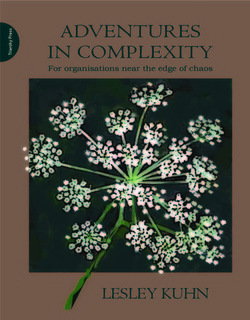Attractors
This description is based on the writing of Lesley Kuhn in Adventures in Complexity.
Politics, religion, economics and environmentalism may all act as attractors - we can see this played out in our own lives as well as within the socio-political life of a nation (in the specifics of environmental planning laws, for example, or the manner by which a country participates in international environmental forums). People may move from being organised around one attractor to being organised around another. An historical example of such a shift is the movement in the Soviet Union from socialism to capitalism. The decline in influence of one attractor with the formation of a new attractor was evident and the senescence of the old attractor and the formation of the new took place in an environment of intensely chaotic dynamics. Similarly, a time of agitation and high energy can be observed when an individual or organisation is in the process of seeking new ways of being or direction. As this is often an unconscious process, awareness of the characteristics associated with potential movement from one attractor to another can help those involved to understand more about their situation. Understanding attractors is critically important for organisations. Even in the most chaotic situation there emerge organising principles, which on careful examination reveal a pattern and hence a shape. Getting it wrong often spells failure, from loss of a positive working culture to loss of market share. Attractors can operate as organising forces in multiple ways in organisations. Take, for example, personal motivations guiding work choices and behaviours. Here it is interesting to reflect on recent research into the most significant workplace attractors for Generation Y. Peter Sheahan, in his book Generation Y: thriving and surviving with generation Y, at work points out nine aspects of the mindset of Generation Yers, describing them as street smart, aware, lifestyle centred, independently dependent, informal, technically savvy, stimulus junkies, sceptical and impatient. He argues that to build a Generation Y-friendly organisation is to build a talent-friendly organisation and that Generation Y are looking for a sense of purpose and meaning, responsibility, promotional opportunity, new challenges and experiences, fair compensation, increased employability, opportunity to express their individuality and creativity, flexibility, ethical practices, fun, a feeling of belonging and being engaged, modern and edgy, up-to-date work places and operations, and fuel to feed their passionate and optimistic outlook on life. To be aware of and to understand these attractors enables managers to constructively review work practices. It may well be that through the appropriate revision of procedures and processes the organisation will not lose young, enterprising and fast learning employees to competitors. Paying attention to attractors helps an observer understand the range of organisational behaviours. Without identification of attractors, the behaviours of others may appear as irrational and illegitimate - we might ask ‘How can that possibly be? Why would she or he ever choose to do that?’ However, when it is apparent what the attractors are, we can see the behaviours of others as valid and sensible from their perspective. Credits and references: Lesley Kuhn Peter Sheahan Image: io9.com |
Explore |



